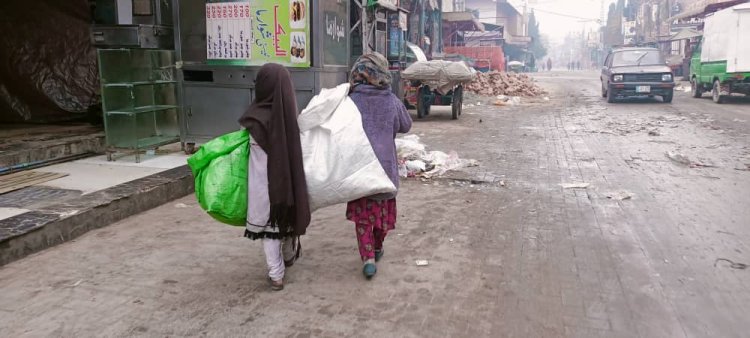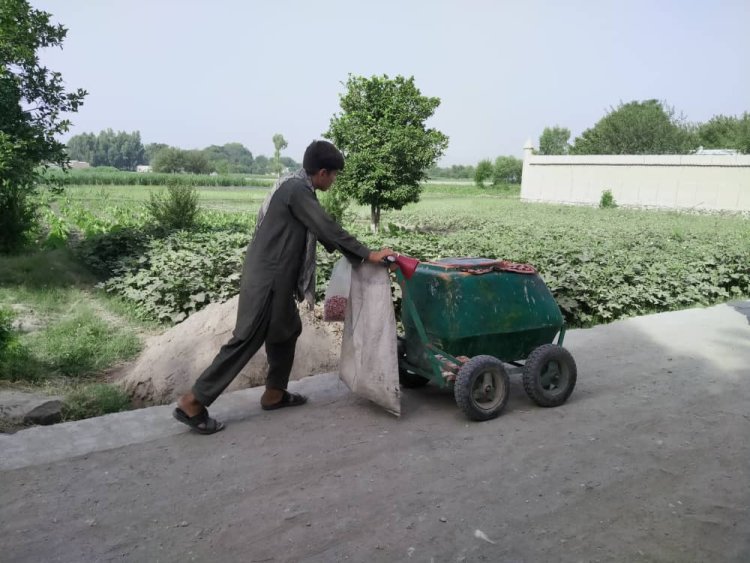From School to Handcarts: The Story of Child Laborers in Kabul

It is not yet fully light when, in a corner of Kabul’s Pul-e-Kheshti area, several children—sleepy-eyed, with small, cracked hands—gather one after another. Their footsteps merge with the rumbling wheels of handcarts, the smell of exhaust, and the cold morning wind.
For many of these children, this is the beginning of another workday—one that places the weight of poverty on their shoulders before sunrise.
Among them stands 13-year-old Sohail. There is a wavering mix of hope and despair in his eyes. He had not even turned ten when life pushed him abruptly from childhood into adulthood, forcing him to work in the streets to help cover family expenses.
“I sell gloves and socks, and I earn about 80 to 150 Afghanis a day. My father was martyred, and I have to provide for my mother and my three sisters," he says.
Sohail’s father served as a soldier in the former government and was killed in a landmine explosion—a day the boy says he will never forget, as he lost not only his father but a piece of his childhood.
“A year after my father’s death, I was forced to leave school and start selling goods in the city. I had no other choice. I want to study, but poverty has taken that away from me.”
Despite everything, he still hopes to return to school someday.
“If I ever escape poverty, the first thing I’ll do is go back to school. My father used to say I would become an engineer. I want to fulfill his dream.”
But Sohail is not the only child telling such a story on this cold morning.
Not far away, 15-year-old Sami-ul-Haq pulls his small handcart. He has carried the burden of life since the age of nine, transporting people’s goods from one place to another.
His father once owned a bakery in Iran and the family lived comfortably, but drug addiction shattered everything.
“Life used to be good,” he says. ”But my father became addicted in Iran. We brought him back and tried to treat him, but he didn’t recover. There’s no one else, so I have to work.”
Sami-ul-Haq studied up to fourth grade before leaving school. He, too, hopes to return:
“If our living expenses are covered, I’ll start studying again. Children who don’t have financial problems should be in school.”
Near Kabul’s Pul-e-Surkh area, two brothers—16-year-old Hamdullah and 14-year-old Feraydoon—offer a different narrative. They work and attend school at the same time, selling juice from their small cart.
“My father is ill and cannot work. My brother and I support the family by selling juice,” Hamdullah says. “We won’t leave school— I attend classes in the morning, Feraydoon goes in the afternoon.”

Psychologists warn that child labor is deeply concerning and has severe psychological, emotional, and social consequences.
Psychologist Hafizuddin Kamil says:
“Assigning heavy responsibilities to children undermines their future and can even lead to drug addiction, as they lose emotional and mental balance.”
Every day of child labor threatens the future of an entire generation—children who push carts instead of holding pens; who work instead of playing; who struggle to survive instead of dreaming.
According to the United Nations, around 160 million children worldwide are engaged in labor, and in Afghanistan about 19 percent of children work due to poverty and economic hardship, depriving them of education and placing their futures at risk.
